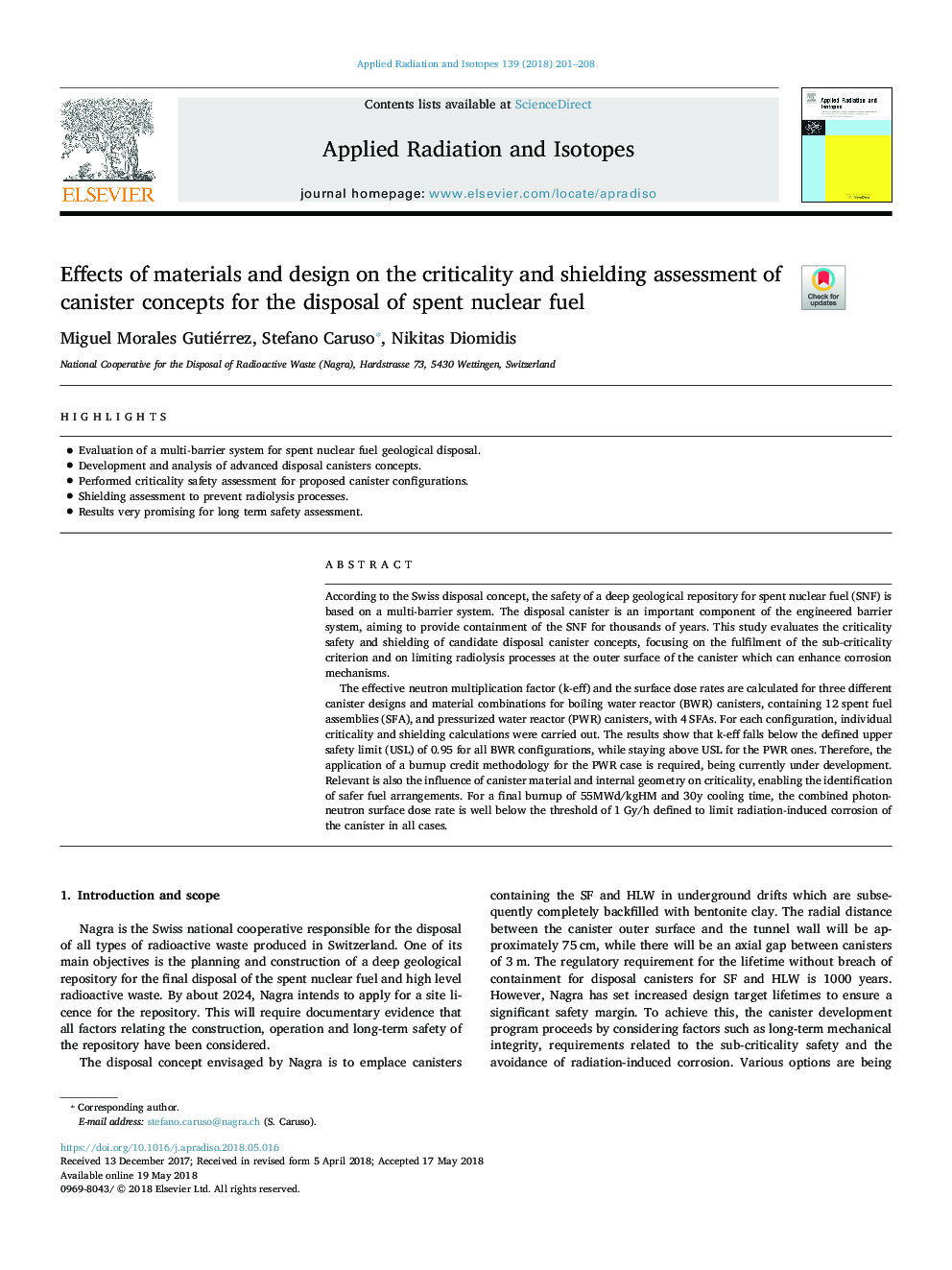| Article ID | Journal | Published Year | Pages | File Type |
|---|---|---|---|---|
| 8208459 | Applied Radiation and Isotopes | 2018 | 8 Pages |
Abstract
The effective neutron multiplication factor (k-eff) and the surface dose rates are calculated for three different canister designs and material combinations for boiling water reactor (BWR) canisters, containing 12 spent fuel assemblies (SFA), and pressurized water reactor (PWR) canisters, with 4 SFAs. For each configuration, individual criticality and shielding calculations were carried out. The results show that k-eff falls below the defined upper safety limit (USL) of 0.95 for all BWR configurations, while staying above USL for the PWR ones. Therefore, the application of a burnup credit methodology for the PWR case is required, being currently under development. Relevant is also the influence of canister material and internal geometry on criticality, enabling the identification of safer fuel arrangements. For a final burnup of 55MWd/kgHM and 30y cooling time, the combined photon-neutron surface dose rate is well below the threshold of 1â¯Gy/h defined to limit radiation-induced corrosion of the canister in all cases.
Related Topics
Physical Sciences and Engineering
Physics and Astronomy
Radiation
Authors
Miguel Morales Gutiérrez, Stefano Caruso, Nikitas Diomidis,
